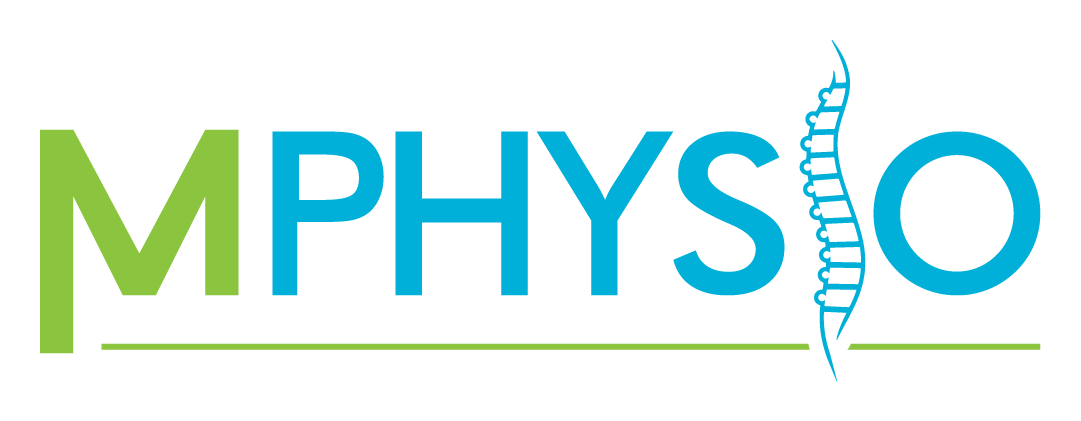Resources, Posture
Correct Standing Posture
Welcome to this article about Correct Standing Posture. This page is designed for patients of Musculoskeletal Physiotherapy Australia to assist them with improving their standing posture.
Here you will find information about various posture types and how you can improve your posture. This page will help you understand which muscles needs stretching and strengthening.
Click below or scroll down to read up on your posture that your physiotherapist at Musculoskeletal Physiotherapy Australia has analysed as you having. Once you read this page answer the questions on the sheet given by your physiotherapist and bring that to your next treatment session.
Types of posture
- Correct posture
- Flat back
- Hyperlordotic
- Kyphosis
- Swayback
- Kyphosis/Lordosis
- Scoliosis
Correct posture
The ideal posture is where a vertical line would run through the ear, shoulder, hip joint, knee joint and just in front of the ankle. Having this posture allows the body to be in optimal alignment which reduces any stress or strain on the muscular, skeletal and nervous system of your body to function healthier, prevent injuries and perform at its peak.
 |
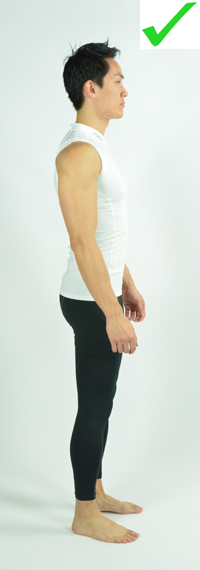 |
Flatback
Refers to having a flat back with minimal to no natural curvature of your spine. This posture puts your back at a higher risk of strains and injuries. Your lower back is in relative flexion, and your head is slightly poked forwards which puts strain on your spine and muscular system. Muscles which are often tight and need stretching:
- Hamstrings
- Rectus Abdominus
- Chest (Pectoralis major)
Muscles which are often weak and need strengthening:
- Iliacus
- Quadriceps
- T-zone
- All of the gluteals
You will need to work on using a neutral spine for all exercisers while keeping your tailbone down when lying on your back. Your physiotherapist will go through specific exercisers with you to help your posture.
 |
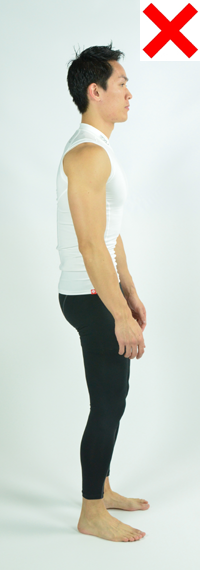 |
 |
Hyperlordotic
Refers to an increase in a lordotic arch of your lumbar spine. You tend to have an excessive curvature in your lower back, and tend to poke your bottom out behind you. This increases the risk of straining your paraspinal muscles of your lower back, and places your lumbar spine at risk of injuries and strains, and having potential disc buldges. Muscles which are tight and need stretching:
- Lumbar erector spinae
- Quadriceps
- TFL/ITB
- short adductors
- Hip flexors
Muscles which are weak and need strengthening:
- Abdominals
- T-zone
- Gluteals
- Lateral hip rotators
- Hamstrings
- Thoracic extensors
To avoid injuring your back further, focus on slightly tucking your bottom in to avoid the lordotic arch in your back. Stretch out your hip flexors and tighten your abdominals and gluts. Focus on your T-zone and oblique activation throughout all exercisers.
 |
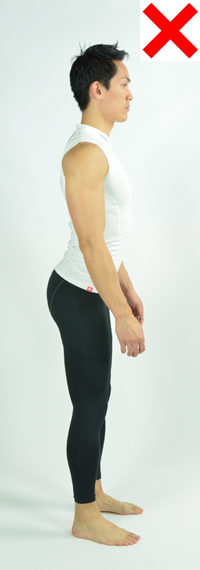 |
 |
Kyphosis
Refers to an increase in a kyphotic arch of your thoracic spine. You tend to have rounded shoulders, and hunched upper back, and your head tends to poke forwards. This places your thoracic and neck joints on strain causing a high risk of upper back, neck and shoulder injuries. Working on your posture will prevent you from having injuries and a poor hunched back. Muscles which are tight and need stretching:
- Chest (Pectoralis major and minor)
- LatissimusDorsi
- Upper rectus abdominus
- Sternocleidomastoid
- Shoulder internal rotators
Muscles which are weak and need strengthening:
- Thoracic and lower cervical extensors
- Mid back (Lower trapezius and rhomboids)
- Deep neck flexors
To avoid having a kyphotic hunched back you will need to focus on opening out the chest and drawing the shoulder blades into correct position, drawing your neck backwards, and lengthening your thoracic spine through specific
 |
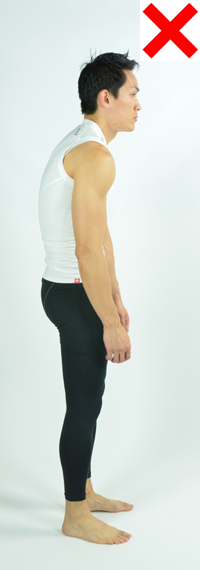 |
 |
Swayback
Refers to your pelvis shifted forwards in front of the shoulder and ankles. Your knees also tend to lock when standing which causes degeneration to your cartilage. This posture places excessive strain in particular to your L4/5 and L5/S1 joints, discs and ligaments. This causes your discs to become vulnerable and increases the likelihood of lower back strain and disc buldges. Muscles which are tight and need stretching:
- You are often not incredibly tight anywhere as you have adopted this position due to certain weaknesses throughout the body
- Instead of relying on your muscles to stand, you tend to rely on certain ligaments and joints which causes accumulative strain, degeneration and pain
- You may have tightness in your lower back (erector spinae), gluts, hamstrings, pectoralis major and latissimusdorsi
Muscles which are weak and need strengthening:
- All of the stabilizing muscles of the body
- All of the gluteals
- T-zone
- Obliques
- Iliacus
- Lower trapezius
- Upper thoracic extensors
- Deep neck flexors
This posture is a habit and requires constant reminding to unlock your knees, shift the pelvis backwards and bring the upper trunk forwards during all sitting and standing activities.
 |
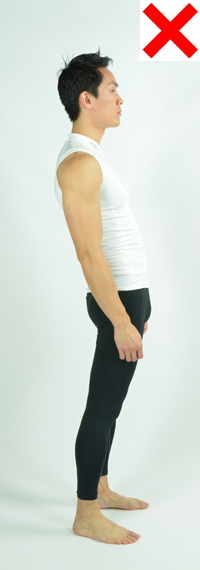 |
 |
Kyphosis/lordosis
Refers to having a kyphotic thoracic spine and a lordotic lumbar spine. You tend to have your head poking forwards placing strain on your neck joints, a hunched upper back causing your shoulders to round forwards, and an excessive arch in your lower back compressing on your lower lumbar spine. This posture places strain in your neck, shoulders, upper and lower back joints, discs and muscular system. This posture is often the hardest posture to correct. Muscles which are tight and need stretching:
- Kyphotic correction:
- Chest (Pectoralis major and minor)
- LatissimusDorsi
- Upper rectus abdominus
- Sternocleidomastoid
- Shoulder internal rotators
Lordotic correction:
- Lumbar erector spinae
- Quadriceps
- TFL/ITB
- short adductors
- Hip flexors
Muscles which are weak and need strengthening:
- Kyphotic correction:
- Thoracic and lower cervical extensors
- Mid back (Lower trapezius and rhomboids)
- Deep neck flexors
Lordotic correction:
- Abdominals
- T-zone
- Gluteals
- Lateral hip rotators
- Hamstrings
This posture requires a lot of work as all 3 segments of the spine are affected. Your cervical, thoracic and lumbar spine as well as the muscular system surrounding your spine are affected. Commence by drawing your head slightly backwards, stretching out your chest, and slightly tucking your bottom in. Your physiotherapist will guide you through your back rehabilitation.
 |
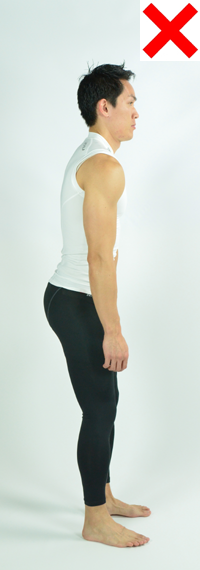 |
 |
Scoliosis
Refers to a side shift of the spine that can occur anywhere in your spine. You may have a single curve known as a C shape curve, or a double curve known as an S shape curve. Your curves can be either fixed or postural. Fixed scoliosis Refers to a bony deformity of your spine that cannot be corrected with exercisers. Exercisers will however help prevent your scoliosis from worsening. Postural scoliosis Refers to your scoliosis being due to a poor posture that can be helped with specific strengthening and stretching exercisers. An example of a postural scoliosis is seen below: a thoracic/lumbar curve concave to the left. Muscles which are tight and need stretching:
- Left latissimusdorsi
- Left quadratuslumborum
- Left quadriceps
- Left adductors
Muscles which are weak and need strengthening:
- Right latissimusdorsi
- Right quadratusLumborum
- Right hip adductors
- Left gluteus medius
- Left scapular stabilizers
- T-zone
Knowing which side your scoliosis is on will help determine which side your body needs stretching and which side your body needs strengthening. Having an S curve shape is more complex which your physiotherapist can guide you on how to best manage your scoliosis.
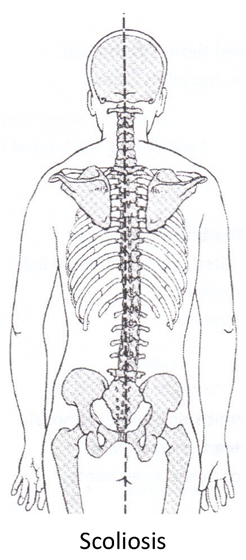 |
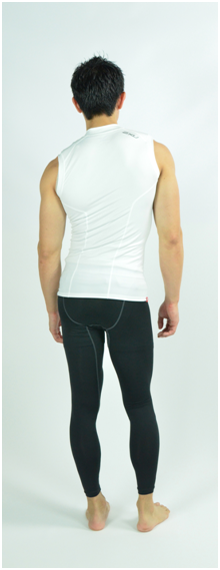 |
